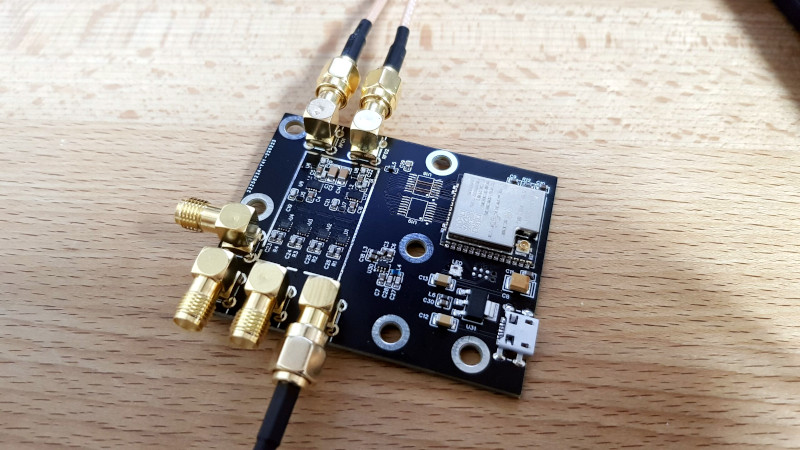It’s not uncommon for a radio enthusiast to have multiple antennas for the same radio, so as you might expect it’s also entirely usual to have a bunch of coaxial cables dangling down for fumbling around the back of the rig to swap over. If that describes your radio experience than you might be interested in the antenna switcher built by [g3gg0], which uses solid-state RF switches controlled by an ESP32 module.
At its heart is the MXD8625C RF switch, a tiny device designed for cellular phone applications that delivers only a fraction of a dB insertion loss and somehow negates the need for any blocking capacitors. It’s controlled by a GPIO line, and he’s hooked up a brace of them to allow the distribution of three antennas to a couple of radios with the handy option of switching in a preamplifier if required. Of even more interest we note that the device is suitable for transmitter switching too, with a maximum 36.5 dBm throughput that we calculate to be about 4.5 W. This board is fairly obviously for receive use, but perhaps the chip is of interest to anyone considering a transceiver project. Meanwhile the software is a relatively simple web-based control linking on-screen controls to GPIOs.
If you are interested in solid state RF switches, it’s always worth remembering that at lower frequencies they can be very simple indeed.
















I’ve had 4 antennae switched to 2 FM tuners. Something to tape whilst another program to hear live. Just like TV. I used to get 3 states of public and dorm stations in a time of no web streaming. Mostly gone now.
Small correction:
the MXD8625C (SPDT) is only used to optionally bypass the preamp while the MXD8636’s (SP3T, one per antenna) switches the antennas onto one of the two “RF rails” or termination.
Would it be possible to purchase an assembled unit from you ??
A cheap RF switch chip workimg fine without distorting at multiple watta of power is a find indeed.
Many only do 100’s of mW at most.
Would it be possible to buy a ready made assembled unit from you ???
That Chinese Maxscend MXD8625C SPDT RF Switch has good insertion loss but terrible isolation.[1] Good for transmitting, bad in a receive switch. SMT RF switches should provide around 50-60+ dB of isolation.[2] Shielded coaxial mechanical relays can give 90+ dB of isolation (very expensive & hard to find, look inside a professional spectrum or vector network analyzer). Remember a receiver can easily operate with signals on the order of a microvolt RMS. (One microvolt RMS at 50 Ohms is -107 dBm or -120 dBV.)[3]
* MXD8625C – SPDT Switch for 3G/4G Application:
– Broadband frequency range: 0.1 to 3 GHz
– Low insertion loss: 0.35 dB @ 2.7 GHz
– High isolation: 28 dB up to 2.7 GHz
– P0.1dB 36dBm
* References:
1. MXD8625C Datasheet
https://datasheet.lcsc.com/lcsc/1811021942_Maxscend-MXD8625C_C285546.pdf
2. Mini-Circuits RF/Microwave Switches
https://www.minicircuits.com/WebStore/Switches.html
3. Conversion between dBm, dBV, Watts, etc.
https://www.translatorscafe.com/unit-converter/en-US/dbm/3-1/decibel-microvolt-decibel-milliwatt/
“Real” radio enthusiasts build a coaxial switchboard for selecting their antennae. Tastefully done it’s copper plates for a common ground in a finely finished wooden frame with engraved labels and festooned with SO-239’s…
Shut up and take my money!
Well, I guess shipping etc would make it rather expensive :)